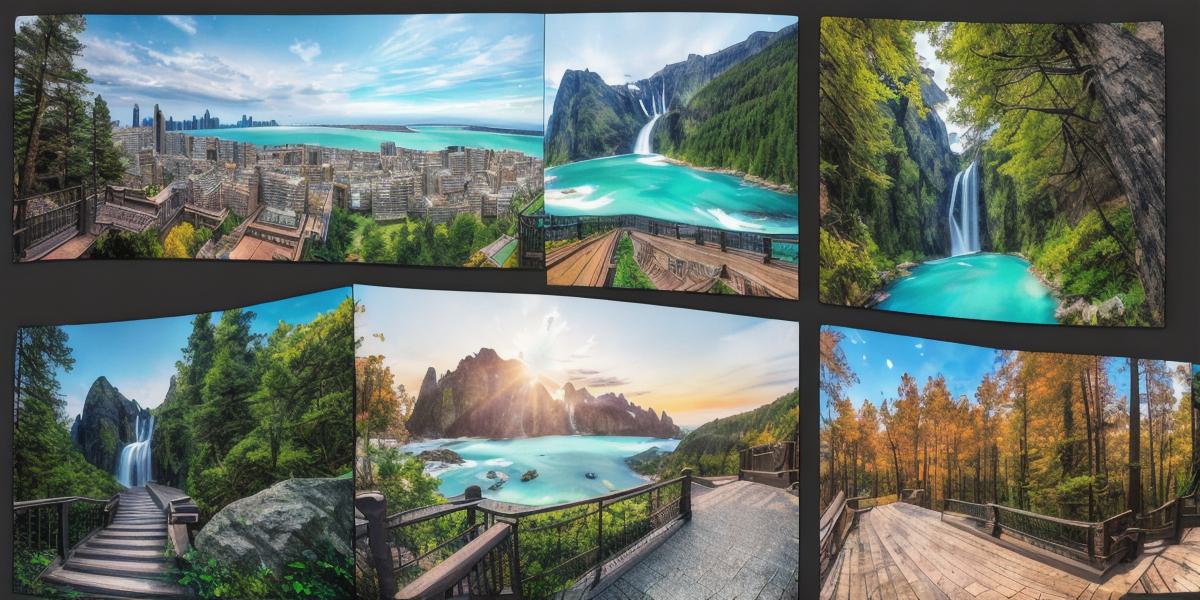Introduction:
Augmented reality (AR) is transforming the way we interact with digital content, from gaming and entertainment to education and healthcare. AR images are a key component of this technology, allowing us to overlay virtual objects onto the real world. In this article, we will explore the fascinating world of AR images and how they can be used to create engaging, interactive experiences for users. We will also discuss some of the latest trends and developments in AR imaging, as well as some of the challenges that developers face when creating these images.
The Power of AR Images:
AR images have the ability to bring digital content to life in a way that is both immersive and interactive. By overlaying virtual objects onto the real world, AR images allow users to experience digital content in a more natural and intuitive way. This can be especially useful in industries such as education and healthcare, where users need to visualize complex concepts or perform procedures that are difficult to replicate in a traditional classroom or operating room.
For example, medical students can use AR images to visualize the internal anatomy of a patient, allowing them to better understand the relationships between different organs and systems. Similarly, surgeons can use AR imaging to plan and practice complex procedures, reducing the risk of errors and improving patient outcomes.
AR images can also be used for marketing and advertising purposes, allowing brands to create interactive, engaging experiences for customers. For example, a furniture retailer could use AR imaging to allow customers to see how different pieces of furniture would look in their home before making a purchase.
Latest Trends and Developments:
There are several trends and developments in AR imaging that are worth exploring. One of the most exciting is the emergence of 3D printing technology, which allows developers to create physical objects based on digital models. This can be especially useful in industries such as fashion and jewelry, where designers can use AR imaging to visualize and customize their creations before producing them.
Another trend is the increasing use of machine learning algorithms to enhance AR imaging. By analyzing data from sensors and cameras, these algorithms can help to improve the accuracy and precision of AR images, making them more reliable and useful for a wider range of applications.
Challenges and Solutions:
Despite the many benefits of AR imaging, there are also several challenges that developers face when creating these images. One of the biggest is ensuring that the virtual objects overlaid onto the real world are accurately aligned and positioned. This can be especially challenging in environments with complex lighting and reflective surfaces.
To address this challenge, some developers are using advanced computer vision algorithms to automatically detect and track the position of virtual objects in the real world. Others are using specialized sensors and cameras to improve the accuracy of their imaging systems.
Another challenge is ensuring that AR images are accessible and usable by a wide range of users, including those with disabilities or limited technical skills. To address this challenge, developers are exploring new ways to make their imaging systems more intuitive and user-friendly, such as using voice commands or gesture recognition.
Conclusion:
Augmented reality images have the potential to revolutionize the way we interact with digital content, from education and healthcare to marketing and entertainment. As the technology continues to evolve, developers will face new challenges and opportunities to create more engaging, interactive experiences for users. Whether you are a simulated reality developer or simply interested in the latest trends and developments in this exciting field, there is much to explore in the fascinating world of AR images.
